#Where To buy postcards UK
Explore tagged Tumblr posts
Text
Postcards: 7 Powerful Reasons to Choose Custom Designs for Maximum Impact
Postcards have been around for centuries, yet they remain one of the most effective ways to communicate a message. Whether for business promotions or personal greetings, custom-designed postcards have the potential to make a big impact. Here are seven reasons why you should choose custom postcards for your next project.

1. Create a Lasting Impression
First impressions matter, and a custom-designed postcard can help you make a lasting one. Here's why custom designs stand out:
Tailored to your audience: Custom postcards let you align your message with your target audience. You can use specific colours, fonts, and images that resonate with the reader.
Memorable designs: Unlike mass-produced postcards, unique designs make an instant impact. People are more likely to remember something that feels personal and thoughtful.
Custom postcards not only stand out but also reinforce your message, making it more likely to be remembered.
2. Showcase Your Brand’s Personality
Custom-designed postcards are an excellent way for businesses to showcase their unique brand personality. This is how they help:
Brand consistency: By incorporating your logo, colours, and fonts, custom postcards reinforce your brand’s identity.
Stand out from competitors: A postcard that reflects your brand's style differentiates you from competitors who use generic designs.
For personal messages, you can incorporate your own artwork or text, giving the postcard a more intimate touch that aligns with your personality.
3. Stand Out from the Crowd
In today’s digital world, physical mail is becoming a rarity. Custom postcards allow you to stand out:
Break through the digital noise: With so many emails and ads online, a physical postcard demands attention. People are more likely to pause and appreciate a postcard in their mailbox than a banner ad online.
Tangible and memorable: The physical nature of postcards makes them something people can keep. They’re not just thrown away like emails.
Custom designs cut through the clutter of digital marketing, creating a physical impression that lasts longer.
4. Enhance Engagement with Eye-Catching Designs
The design of your postcard plays a key role in engagement. Here’s why custom designs can increase interest:
Vibrant visuals: Bold colours and stunning graphics make your postcard more attractive, ensuring it catches the reader’s eye.
Call to action: A well-designed postcard can encourage readers to take action, such as visiting your website, signing up for a newsletter, or attending an event.
Custom postcards allow for creative freedom, meaning you can tailor your design to suit your goals, whether it’s increasing website traffic or boosting sales.
5. Cost-Effective Marketing Tool
When compared to other marketing channels, custom postcards are highly cost-effective. Here’s why:
Affordable production costs: Postcards are inexpensive to produce, even with custom designs.
Bulk printing options: You can reduce costs further by ordering in bulk, making postcards a budget-friendly option for marketing campaigns.
Custom postcards deliver great results without the hefty price tag, making them an ideal choice for small businesses and individuals on a budget.
6. Versatility for Every Occasion
Custom postcards are versatile and can be used for various purposes. Whether you need to:
Promote your business: Custom postcards can advertise new products, seasonal promotions, or special offers.
Send personalised greetings: For birthdays, holidays, or thank-you notes, you can design postcards that reflect your style.
Invite customers to events: Postcards are an excellent way to invite clients to grand openings, sales, or other events.
The flexibility of postcards allows you to create a design that suits any occasion, whether for business or personal use.
7. Easy Distribution
Postcards are straightforward to distribute and can be sent in various ways:
No envelopes needed: Unlike other direct mail, postcards don’t require envelopes, making them cheaper and quicker to send.
Flexible distribution methods: You can hand them out at events, send them through the mail, or leave them in high-traffic areas.
The ease of distribution ensures that your postcard reaches its intended recipient quickly, maximising your marketing impact.
How to Make the Most of Custom Postcards
To fully unlock the potential of your custom postcards, keep these best practices in mind:
Know Your Audience
The more you know about your target audience, the more effectively you can design a postcard that appeals to them. Understand their needs, preferences, and pain points to create a message that speaks directly to them.
Use High-Quality Images
Postcards are a visual medium, and the images you use should be high-quality and relevant to your message. A blurry image or a cheap-looking design can have the opposite effect of what you're aiming for.
Clear and Simple Call to Action
Every postcard should have a clear call to action. Whether you want the recipient to visit your website, call for more information, or take advantage of a special offer, make sure your message is direct and easy to follow.
Leverage Both Sides of the Postcard
Don’t be afraid to use both sides of the postcard to get your message across. The front can feature an eye-catching image or headline, while the back can detail your offer, event, or personalised message.
Track the Effectiveness
Custom postcards can be part of a broader marketing strategy. By adding a unique code, URL, or QR code to your postcards, you can track how effective they are in driving action. This data can help you refine future campaigns and improve results.

Frequently Asked Questions (FAQs)
Q: Why should I choose custom postcards over generic designs?
A: Custom postcards allow you to showcase your brand’s unique identity, engage your audience more effectively, and create lasting impressions. Unlike generic designs, they can be tailored to suit your specific needs, making your message more personal and memorable.
Q: Are custom postcards cost-effective for businesses?
A: Yes, custom postcards are a budget-friendly marketing tool. They are affordable to produce, especially in bulk, and offer a high return on investment when targeting specific customer groups. Their simplicity and versatility make them an excellent choice for cost-effective campaigns.
Q: What are the best uses for custom postcards?
A: Custom postcards are perfect for a variety of purposes, including business promotions, event invitations, thank-you notes, seasonal greetings, and personal messages. They provide a versatile way to connect with customers, clients, or friends in a meaningful way.
Q: How can custom postcards enhance customer engagement?
A: The unique design of custom postcards grabs attention and invites the recipient to take action. Whether it’s through striking visuals, personal messages, or interactive elements like QR codes, postcards foster greater engagement, helping your message stand out and driving responses.
Q: Can I personalise postcards for different occasions?
A: Absolutely! Custom postcards can be designed to suit any occasion, from business promotions and holiday greetings to special events and thank-you cards. Their versatility makes them ideal for personalising messages for every need, ensuring your card resonates with the recipient.
Final Thoughts
Custom-designed postcards are an invaluable tool for businesses and individuals alike. Their ability to make a lasting impression, showcase your brand’s personality, and engage your audience makes them a must-have for anyone looking to communicate effectively. Whether you’re using them for marketing or personal messages, custom postcards help you stand out from the crowd, build stronger connections, and drive results.
By incorporating these seven powerful reasons into your next marketing or personal project, you can leverage the full potential of custom postcards and make a greater impact with your message. Don’t just send a postcard; send a meaningful, custom-designed piece that leaves a lasting impression.
#Postcards UK#Postcards online#Where To buy postcards UK#Printing services#graphic design#Printing in Stratford#Newham#Manor Park#Whitechapel#Aldgate East#Central London#Dalston#Ilford#Barking#Dagenham#Romford#Greenwich
0 notes
Text
HONEY REVENGE
07.12.2023 @ Camden Assembly, London (220 Capacity)
Written Dec 2023
I started listening to Honey Revenge at the start of 2023, caught in the promo of their single ‘rerun’ & after seeing other artists I follow repost their content, I went back to listen to their discography & was hooked. Their debut album ‘Retrovision’ is one of my favourites of 2023 and all time (see review here). They never fail to miss with banger after banger - not just at first listen but the songwriting & production is amazing too. Naturally, as soon as this show was announced, tickets were bought. The band itself is made up of Devin on vocals and Donny on guitar, but are accompanied by their touring members, Tay Kincaid (bass) & Matt Arsenault (drums). They have played numerous tours this year alongside The Home Team & Broadside, Loveless, Finish Ticket & Arrows In Action. a US headline tour in the fall, and now The Home Team & The Used, here in the UK, with plans to open for Meet Me @ The Altar across the United States in the new year.
The fist opener was a rock band hailing from Leicester called Mouth Culture, taking inspiration from a range of musicians from Bring Me The Horizon to The 1975 to Harry Styles. THeir music is a mashup of all genres with a distinct heavy, edgy vibe. The second openers were a Scottish band called happydaze who are label buddies with Honey Revenge (Thriller Records). Their set was much heavier and had everyone hyped up for Honey Revenge’s set afterwards with heavy rock tunes that have a clear pop influence.
Seeing my favourite songs live was an unreal experience. I’ve been a fan of this amazing band for so long now and with all their concert content online, it’s safe to say that my expectations were high. But that didn’t matter because they were blown out of the park anyway. Due to the fact that this was a headline show, they were able to play every single song in their discography with no breaks, meaning that everyone in the crowd was able to hear their favourite Honey Revenge song. I never realized until I listened to the retrovision album in full, but Devin’s vocals are phenomenal and being able to sing so many belters back to back AFTER having rushed through London from an opening set down the road to this headlining gig is a real show of her talent - I know many of today’s new up-and-coming singers wouldn’t have been able even think about it, let alone actually doing it. Based on where we were in the crowd Ami & I watched both Donny & Devin kill it in real time and it was clear that everyone in the room enjoyed themselves the entire night.
Having come directly from their show with The Used, the band came on after happydaze had packed up their stuff and with Camden Assembly being such a small venue, the entire crowd was able to see them set up their equipment. Not just the drumkit and guitars, but the pedalboards, multicores & mic stands too - everything. Being a sound engineering student, I loved seeing this with a different lens than most people in the crowd, watching the team set up as quickly as possible just like how I’ve been doing in college with my classmates tells me I’m not too far from a professional standard within the industry and I can’t wait to be doing just that someday. Security was pretty tight at the venue (as one would expect in London). I wasn’t able to meet the band after the show due to me being underage and the band wasn’t able to come out of the bar but Ami was able to go in and get them to sign my ‘are you impressed?’ postcard & their CD lyric booklet that I had bought with me, so all was not lost and I was still able to buy a t-shirt from their tour manager, Em.
It's rarely heard of for a band like Honey Revenge to be able to come and do an international tour (even if it's as a support act) within their first year of touring. To be able to do a show as a headliner is unheard of outside of viral success and them being able to both so just proves that they’re here to stay and take over the music industry. Camden Assembly is an iconic venue with multiple star acts of the music scene such as Ed Sheeran, The Strokes & Adele starting out there and to be able to see my favourite band was a perfect close to the year.
#music#music producer#music production#concert#live music#guitar#drums#pop music#pop rock#indie rock#punk rock#alternative rock#new wave#honey revenge#california
8 notes
·
View notes
Text
Fluorescent Suspicion
You were walking along the high street, to the shoe shop at the far end. This was one of the longest streets in the UK and there were maybe three thousand other people with you, walking in different ways. You passed tourists, who always walked at a slower pace. And men in plush suits with stern faces; and disgruntled mothers with their noisy bairns; you passed the corporate shops on the side of you, with huge pictures of models advertising jewellery; and you passed the fast food chain with its gory world-famous logo. Right next to the fast food joint was a Job Centre. And in between them was a man sitting on a strip of cardboard, and you thought it must be even more awful these days, because most people didn’t use cash anymore. You moved on and you came to that famous monument that always appeared on postcards celebrating the city, with its masonry all blackened from the industrial age. You took a turn off the main street, and a bus hurtled past your body at ferocious speed: was only two yards away, and it sure would’ve killed you had you been a couple of yards to the right. There was a chain coffeeshop nearby with adults sitting outside, and a competing bar beyond that with folks getting drunk, all in the muggy summer heat. You heard the laughs and screams of the public and you didn’t know the stories, what the chat was. You passed a music record store that was somehow still surviving in the year 2024. Pigeons dabbled about on the lane with their pretty turquoise necks that twitched about. You passed a busker who was trying valiantly and he must’ve been in his early twenties and he wore a cap and you admired his trying. Finally, you reached the shoe shop. It was actually a fashion job, for discount clothes. When you walked in you passed a security guard. And he followed you with his fluorescent suspicion as you headed along the aisle. This had happened to you a few times before: security guards following you, and you wondered why you gave off a criminal vibe. You had money and you were only here to buy shoes. Just a cheap pair of trainers was all you were after. You picked a pair of trainers off the shelf that must’ve been made somewhere 5000 miles away, by some poor bastard who was being fucked over by globalisation. And you felt bad to be where you were from instead, and contributing to inequality. When you waited in the queue, the security guard from earlier was still eyeballing you. You made sure to get your receipt from the girl at the counter. And you walked past the security guard with the receipt in your hand, and you went up the escalator, and back outside again, and it was actually hotter in the street than it’d been in the store. With that stuffy tired late summer air.
#writeblr#creative writing#writers on tumblr#tumblr writers#prose#spilled ink#stories#short fiction#fiction#short story
2 notes
·
View notes
Text

Here it is (finally!) This is a revamped version of Go Fresh Grocery, which wasn't supposed to take me all day yesterday, but it did!
It was supposed be a large store but became a small shopping centre instead! But I'm really pleased with how it came out. There will be a lot of pictures for this one, so let's start with the exterior shots.
There's quite a few pictures so I'll put it under the tab.

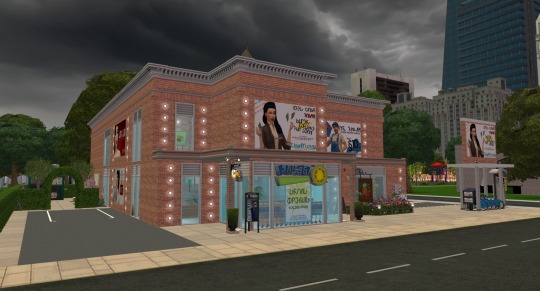
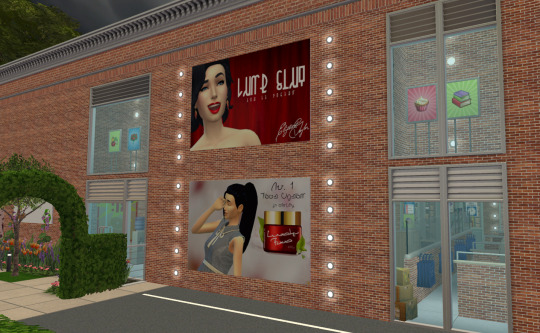


You know I have too much time on my hands when I designed the upstairs at the back of the shop where nobody will see it, as the area is covered by trees. 🤣
I got the impression that as it serves the majority of Fenton West, the store had to be bigger, include car parking and so I thought 'Why not utilise all that advertising real estate on the walls?' Hence, all the adverts.

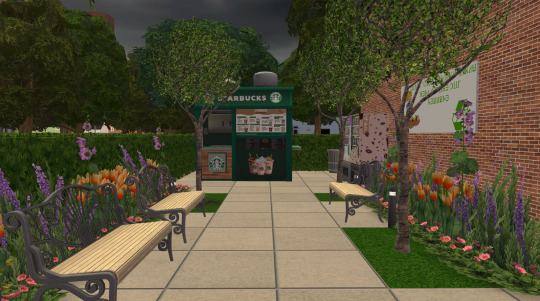
There is a driveable space on the other side of the building which also has a path to a small garden area where I have some vending machines and a functional Starbucks vendor.


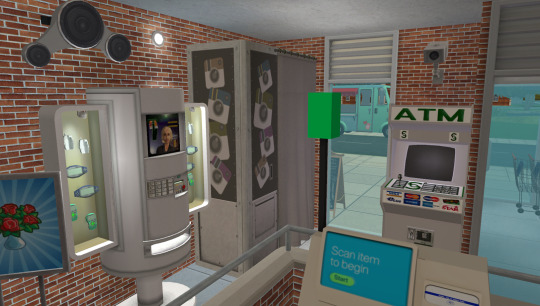
Heading back to the front door of the building, we have a small lobby where all the trolleys are parked/collected, before we head into the main hall and the self-checkouts are right in front of you. Job seeker's board on the left along with a phone stall, photobooth and cashpoint.

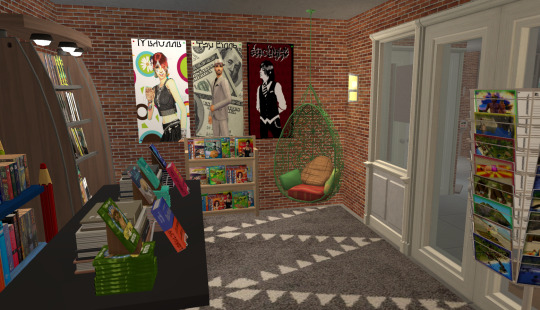
This is a small, part-time run bookshop which teens can get the latest magazines or book releases. You can also buy postcards here and inquire more about the local universities choices.


To the right of the bookshop is a small flower/seeds shop, again, part-time open.
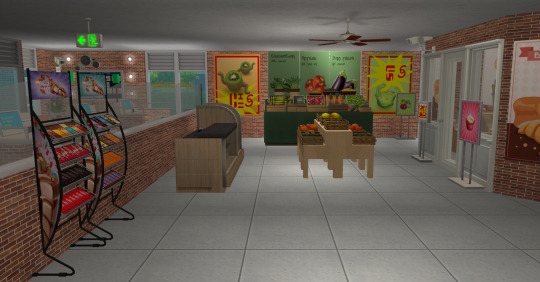
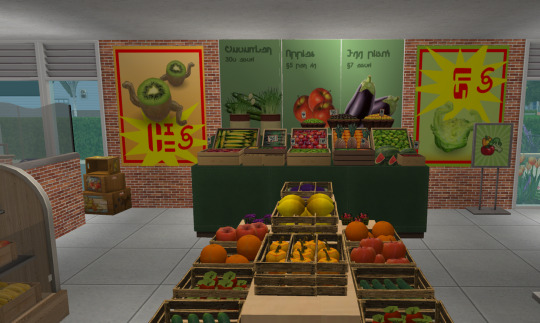
Then the main area features the fruits, vegetable and other fresh produce as that's always the main feature as soon as you walk into supermarkets (or here in the UK it is). You can also get fresh smoothies, made to your tastes here as well.


Then there's the small bakery.


Across the way is the dry food shop.


Then through here is the butcher, who also sells fresh fish.


Back down the main hall is the frozen foods.
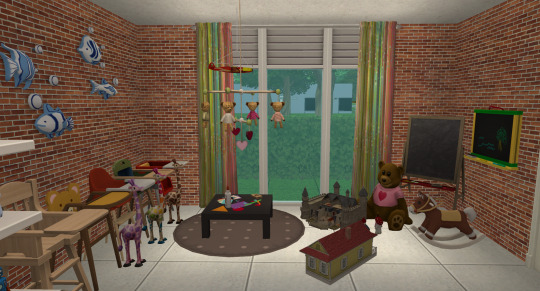

And lastly, there's a small toy shop for young children.

Floorplan for those who are interested. Seriously, this took me all of yesterday and I was so drained afterwards!

Was far too pleased with myself for this bike storage area 🤣🤣🤣
18 notes
·
View notes
Text

NOSTALGIA UK
The small town of Guildford (1994)
Coming from Glasgow, Guildford felt like a stark contrast—tiny in comparison. Tiny, yet undeniably charming.
Located south of London on the way to Portsmouth, Guildford sat along A3 road or a direct train line from Waterloo. The town itself rested on a gentle incline, as much of the surrounding region was hilly. At its heart, Guildford was centred around just two main streets, one of which—the high street—was entirely pedestrianised. I remember the town being remarkably tidy, peaceful, and never too crowded, with a postcard-perfect charm.
The cobbled high street sloped gently uphill, flanked by two rows of historic shopfronts. As you ascended, you came across an ornate old clock, suspended by a side arm attached to one of the buildings. Turning back, you would be rewarded with a breathtaking view of greater Guildford and the rolling hills beyond. At the foot of the High Street, the River Wey flowed beside it, adding to the town's charm.
Like many English towns, Guildford had its main shopping mall—the Friary Centre, if I remember the name correctly. Some of the bigger stores, however, were scattered around the High Street or tucked into quieter corners. Debenhams, a major name back then (now gone, I believe), stood in its own building beside the River Wey. I used to buy discounted perfumes there as gifts to take home for summer. Marks & Spencer held a spot on the High Street, as did my go-to clothing store, Topman, though it was somewhat hidden inside a small arcade. There was also a small Sainsbury’s, and of course, WH Smith, the ever-present British bookstore. At the entrance to a walkway connecting the town’s two main streets sat a watch and jewellery shop, a landmark of sorts in my memory.
Tucked behind the right row of shophouses as you ascended the High Street was the Guildford Castle. A medieval relic dating back to the 11th century, it sat in a serene garden that burst with colour in spring and summer, offering a peaceful retreat from the town’s centre.
Walking from the bottom of the High Street to its highest point, where the clock stood took no more than 10 to 15 minutes. Small—undeniably small—for a university town, yet that’s precisely what made it special. Its size, its beauty, and its quiet charm have stayed with me to this day.
0 notes
Text
I made it to the shop today and decided to buy a small pot of tete a tete daffodils as a gift to myself, I regret not getting one of the bigger pots and may go back tomorrow if my legs can take it
They were marked up at £1.50 but it wouldn't scan and the woman behind the til put it in as 50p and winked at me. It's St David's day today too so the daffs feel appropriate
One of my partners sent me a very cute selfie this morning and another rang at 4 to ask how I was and to arrange dinner on Sunday. I've written my bfs birthday card and done a postcard for a friend. My hands ache now but they are working again a bit, enough for me to continue on my CV and have a click through job listings online.
I don't want to reveal too much about where in the UK I live, but I can't say this without doing so really.... my council have just announced a 100% cut in funding for the arts from 2025. No money for the arts sector at all. I work in arts related care and support, and no money in the arts means everyone will be scrabbling for whatever smaller funding they can get, my workplace is already suffering and I know I'll have to find a new job. The attitudes to people locally have left me feeling very tender, lots of people don't think the arts sector should have council funding anyway... I feel sore, what is a world without art? What have we come to when the general consensus is that art is unnecessary and unwanted by the people? Now more than ever we need art, surely?
Despite all that I feel personally hopeful, I've found a few jobs doing stuff that I like, one that pays 40k a year and is remote....! Wowie! Must get CV done!
0 notes
Text
Week 3 in Prague: From Czech Cheers to English Beers
Ah, Prague, you've started to feel like home—albeit a home where I occasionally still get lost and mispronounce everything. But before we dive into the heartwarming tale of settling in, let's talk about my weekend escapade to London, because, why not add a bit of British flavor (if that even exists) to this Czech adventure?
London's Lessons: More Than Just an Accent Adjustment The Football Phenomenon: Attending the Fulham vs. Aston Villa match was an experience of a lifetime for me and a wild intro into British sports culture. Having played football (soccer) my whole life, it was always my dream to go to an English Premier League match. The unison of chants, the shared groans of despair, and the collective leap of joy with every goal—it's a camaraderie that transcends the game. And let's not forget the pre-game rituals in local pubs, where the air is thick with anticipation and ale. My takeaway? Football isn't just a sport in the UK; it's a religion, and match day is the weekly service.
The Nightlife Navigations: London's clubs and bars are a testament to the city's diverse cultural tapestry. Each venue, with its own vibe and tribe, felt like hopping from one continent to another. From the electric energy of Soho to the laid-back charm of Shoreditch, London after dark is a world unto itself. But here's a pro tip: keep an eye on the tube's closing time unless you fancy a midnight marathon back to your place. Craziest part about being there, however, was that by the end, we could not wait to come back “home” to Prague. Strange how we associate a country where we understand 99% less with “home”, over an alternative where we understand everything.
PRO TIP: Make sure to budget well (if you are on one). I don’t have a strict one but I did create a spreadsheet to see how much I spent in London, and it was a lot more than I expected. I got spoiled taking Ubers in Prague for like a couple of dollars everywhere, needless to say, that is not the case in London.



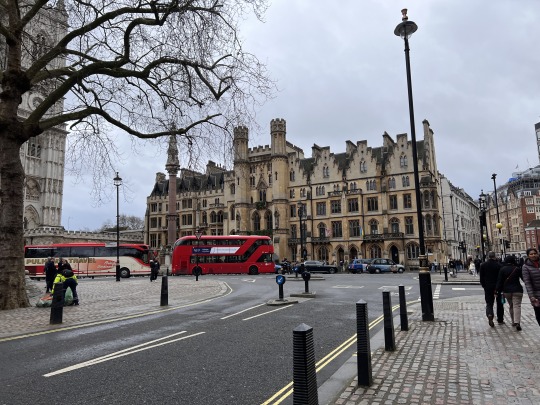

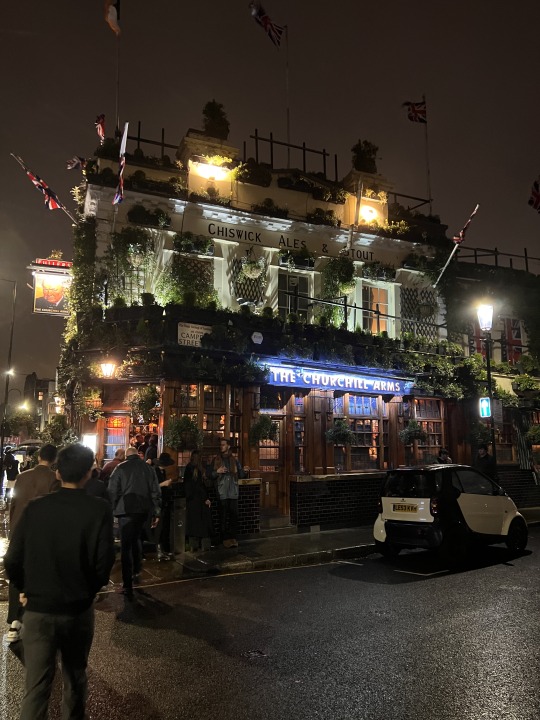

Back to Prague: Feeling Like a Local (Sort of) Returning to Prague was like coming back to a familiar book where you're still discovering new chapters. The city's charm isn't just in its postcard-perfect Old Town; it's in the everyday moments and the small victories, like successfully ordering coffee in Czech without accidentally buying a farm animal. I've started to say "Dobrý den" (Good day) with less hesitation and "Děkuji" (Thank you) with more confidence. And yes, I still celebrate when the tram goes in the direction I intended.
Tip: Embrace the small wins. Every correct tram stop or successfully navigated grocery store trip is a step closer to feeling at home.
The Train Bar and an Unexpected Client Meeting: This week wasn't just about cultural assimilation; it also included a serendipitous professional twist. We visited the Train Bar—a quirky spot where the novelty of having drinks delivered by model trains never wears off. Seeing trains deliver our food and beer sparked the inner child in me which felt great. Earlier that day, we actually met with Operator ICT, a client for one of our class projects. Discussing project details that will take a whole semester to implement added a real aspect to school but surprisingly, it felt refreshing to actually work on something tangible.
Tip: When meeting with Czech people, a respectful "Dobrý den" can set a positive tone, no matter where you are. A lot of colloquial English phrases are not understood here so make sure to know your audience when you talk.


Settling In: The Comfort in the Chaos As I navigate my third week, Prague's maze-like streets and tongue-twister language have started to feel less daunting. Finding a favorite café, jogging through Petřín Park, or just watching the sunset over the Charles Bridge, I'm reminded that home isn't just a place; it's the feeling of being part of something. Whether it's the historical allure of Prague or the bustling energy of London, each city offers a unique tapestry of experiences. Something else I have gotten used to is balancing going out on all nights of the week to make the most of your time, especially if you are traveling on the weekends. Since I was gone to London from Thursday-Sunday, it made my Monday-Wednesday a lot more important here, which meant going out those nights as well. Whether it’s a chill night out at a bar or an intense clubbing spree, learning to make the most of my moments here has been probably the biggest change here. Another thing my roommates and I had to change was our living habits. We have cleaners who come to our apartment every week to take care of the general cleaning the apartment needs, but ours was so trashed that even the cleaners had to report us to IFSA. It really sucks when your apartment is the spot to pregame and all the mess accumulates throughout the week. We received an email from the program advisors stating we had to be better about cleaning up our mess which was totally fair. Since then we’ve made a more conscious effort to take out the trash and clean dishes regularly rather than wait until the cleaners come to do it.
Tip: Make a local café or spot your "go-to." It's these little anchors that transform a city from a place you live in to a place you belong to.
Wrapping Up: From Prague to London and Back This week was about blending the familiar with the new, from the cobblestones of Prague to the double-decker buses of London. It's a reminder that studying abroad isn't just about seeing new places; it's about seeing yourself in new situations, growing, learning, and, of course, trying to pronounce "Pražský hrad" without sounding like you're casting a spell.
Until next time, keep exploring, keep learning, and maybe, just maybe, keep a Czech phrasebook handy.
Na shledanou for now, Rachit Khandelwal
0 notes
Photo
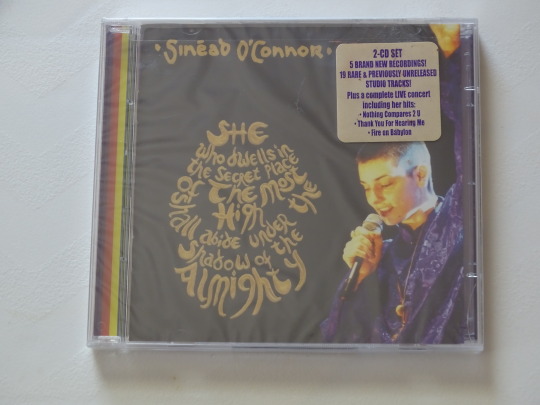
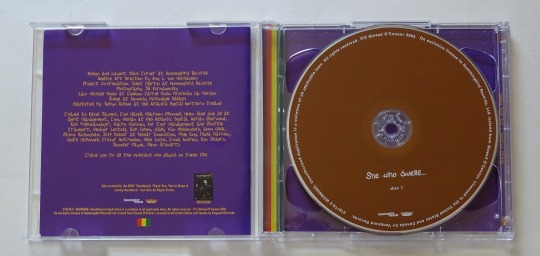
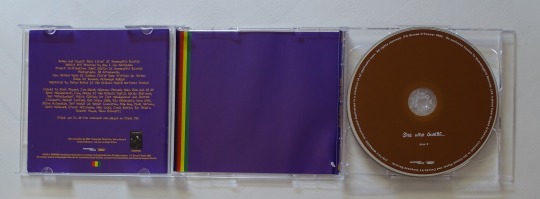


Wednesday, 24 May 2023:
She Who Dwells Sinéad O’Connor (Vanguard) (released in 2003)
This past Friday, 19 May, Smiths bassist Andy Rourke passed away. So why isn’t this a Smiths album? Well, I’m not the biggest Smiths fan in the world. Sure I have The Queen Is Dead (and I used to have everything else before I traded it all away) on vinyl and any number of compilations on CD, but I remembered that Andy Rourke played bass on three tracks on one of my all time favorite albums, Sinéad O’Connor’s I Do Not Want What I Haven’t Got. I love that album so much that it came in at Number One on my Top 125 Favorite Albums of the 1990s. (I even wrote three versions of this list and each time, Sinéad landed at Number One.) Rourke plays on The Emperor’s New Clothes, Jump In The River and You Cause As Much Sorrow.
I ended up watching a video to The Emperor’s New Clothes the next evening after Rourke passed away and once again I was besotted by the song and subsequently other songs off the album. I ended up listening to something like eight different live versions from Sinéad’s killer The Last Day of Our Acquaintance, a song which never fails to give me chills. (I even found a version performed live by Michael Stipe!) This led me to her discography and suddenly I began fretting all the holes I have in her catalog.
Sinéad was an artist I bought from the get-go with The Lion and The Cobra (thanks to Musician magazine) and I bought her in real time all through the 1990s. I gave up on her work after 1994′s Universal Mother and then I foolishly traded away 1992′s Am I Not Your Girl, 1991′s My Special Child EP and Universal Mother and never bought her work again.
Cut to 2010, I’m in Davenport, Iowa. Mrs Echo is at a convention for card design (this is 2010 BC, mind you) and I’m wandering the city in search of a record store. I stumble upon Zzz Records and go inside and find a 2005 release from Sinéad, Throw Down Your Arms which is a reggae covers album she made with Sly Dunbar and Robbie Shakespeare. I was seriously into reggae at the time (and not Bob Marley, mind you, I was into Culture, Joe Gibbs and The Professionals, The Congos, The Abyssinians, Burning Spear and my namesake, Lee “Scratch” Perry among others) and I thought surely this must be a sign to listen to Sinéad again. After that, I bought everything else she released in real time (I bought 2007′s Theology shortly after buying Lay Down Your Arms) and fell back in love with her voice.
It took Andy Rourke to get me to pay attention to the five Sinéad albums I either had or never bought and barely paid attention to. I always believed that She Who Dwells was a lengthy two disc live album but it is more than that. Disc 1 is all studio tracks, which I did not know until today. Five of those tracks have never been released, the others will have to be researched to understand where they originate from (the credits are sorely lacking in the booklet). Disc 2 is the live album. I feel better about this album already!
Above you see that I bought this still sealed. There was a price tag on the hype sticker that I had to peel off. It came from CDepot and sold for $15.99. I bought it for ten bucks which is substantial savings from what the vampiric Zuber is asking for a sealed copy on eBay: $88! (And trust me, it won’t even be in stock, the vultures will have to find it and take four to eight weeks before they do.) The second photo shows you what this looks like opened up. The third photo reveals the second disc which is in one of those swing inlay trays. The fourth photo above is of the back of the CD. The fifth photo shows us the title strip which record companies in the US invented out of fear people would steal the CD inside the jewel case. Remember, in the UK, CDs were never sealed. Good old American capitalism.
Back in the old days, when this album came out, the internet was so new, that companies were still using antiquated feedback systems such as postcards via the US Postal Serivce! Below you can see the front of the postcard included inside this CD, followed by the back of the postcard.
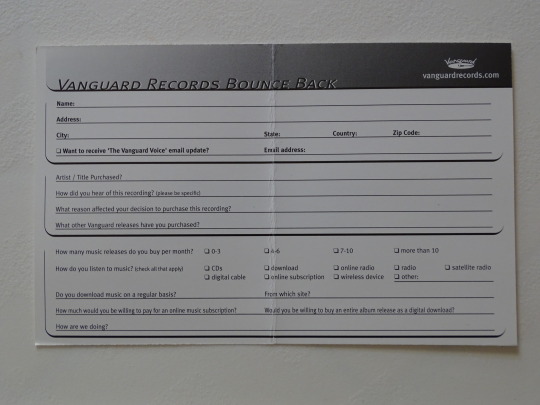
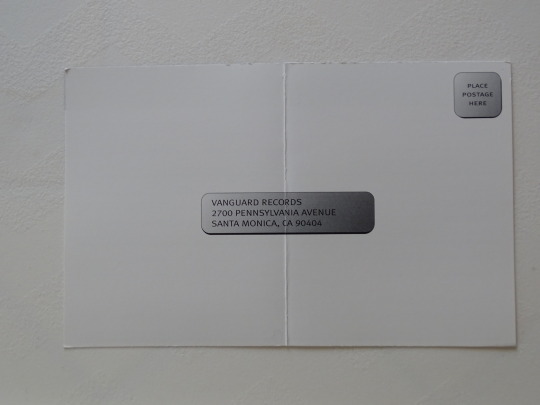
Here is a close up of the hype sticker. I’m not sure it is necessary, but I took the photo and cleaned the hype sticker up so nice and neat, I want to show it off.
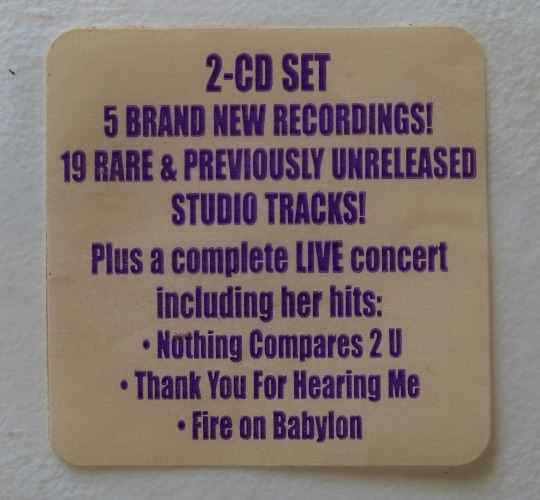
Here is a shot of the cover without that hype sticker.

Although I’m not certain it is even needed, I close this entry with shots of both the compact discs.
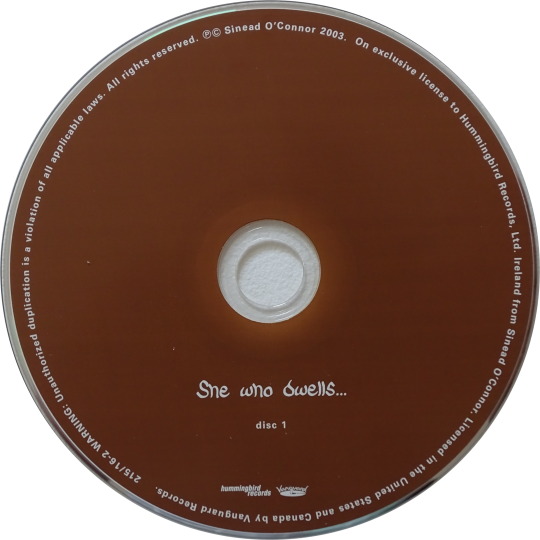
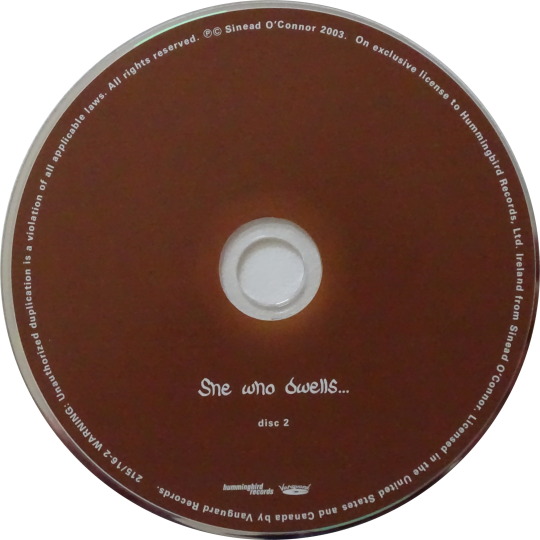
You can certainly count on more Sinéad O’Connor clogging up this tumblr!
0 notes
Text
How Do You Clean and Maintain a Thatched Roof?
There’s nothing easier on the eye than a freshly thatched cottage, is there? Thatch has become a mark of authenticity that a historic cottage is the ‘real deal’. And can a village claim the name without at least one thatched cottage in its environs?
Well, yes, it can. But somehow a village doesn’t seem as authentic without at least one thatched building in its midst. Thatched buildings are the stamp that hallmarks a village as a ‘ye olde’ part of Britain’s rich history. But keeping a thatched roof maintained and cleaned is essential to its natural beauty. Lets dive into how to keep your thatched roof in stunning form.
Why is Cleaning Your Thatch Roof Important?
Many people dream of escaping to the country. And part of that rural idyll might include buying the picture postcard ideal of a rural property – that’s one with a thatched roof, of course.
And while there’s no denying the beauty and historical value of owning a property with thatch, there’s also denying that it’s a costly thing to maintain. As with any part of home maintenance, prevention is better than the cure. So, cleaning and maintaining your thatch regularly is a surefire way of prolonging its life.
Norfolk Reed has a lifespan of 50 – 60 years. And other popular thatch – Combed Wheat, Long Straw or Water Reed from Eastern Europe can last 55 – 65 years. But you’ll only get the maximum lifespan out of your thatch if it is well-maintained.
And with the average price of re-thatching in the UK ranging from £33,000 to £67,000, no further incentive is needed than to do just that.
Some of the cleaning and maintenance you can do yourself. Or if you have the budget and the inclination, you can hire contractors to do the work for you.
Of course, depending on the type of property and thatch you have, hiring contractors might be your only option to protect the integrity of your thatch and for health and safety reasons.
But let’s look more closely at how to clean your thatch.
How to Clean a Thatched Roof
Through regular cleaning you can preserve the life of your thatch. And regular cleaning can also help save money long term by preventing small problems from becoming larger problems.
But how do you go about it?
As with all aspects of roofing maintenance, cleaning thatch is probably best left to the professionals. They have already invested in the equipment and training necessary to do a speedy and efficient job.
But not everyone has the budget for annual thatch care or they may prefer to do the job themselves. Either way, here are some ways you or your contractor can clean your thatch.
Thatch Brushing (or Combing)
A thatch maintenance task that is often required is ‘brushing’. There are a number of methods that are used to comb a thatched roof. But let’s start with learning what ‘brushing’ is.
What is Thatch Brushing?
Brushing is the method of removing the ends of the thatch from the roof. And it should be done several times during the lifetime of the thatch to prolong its lifespan. It should be done more often if your thatch is prone to dampness.
Why is Thatch Brushing Necessary?
This type of maintenance is necessary because, like all organic materials, the ends of the thatch will slowly start to rot. The ends are the most exposed to weathering and other environmental factors, so this is naturally the part of the thatch that is going to require the most maintenance. Plus, the ends will hold more water once decay has set in.
Removing the ends of the thatch will allow air and sun to dry out the undamaged parts that lay beneath the rotten outer parts. While it might seem that you’re then exposing a new layer of thatch to the elements, it does prevent greater wear and tear in the long run.
This is because by removing the damp and decaying parts of the thatch, you’re preventing the excess moisture from penetrating deeper into the thatch. You want to avoid moisture penetrating to a place where air and sun are less likely to reach and help it to dry.
How Often Should Thatch Brushing Be Done?
How often you have your thatch brushed will depend on a number of factors including the type of thatch, your location, the environment and if there is unexpected damage to the thatch.
Roughly, though, brushing should be done between 3 and 4 times in its lifetime. There wouldn’t be enough thatch left for many more brushing after this point, so rethatching would be necessary. This could mean that some thatched roofs might need brushing every 8 years and some can go as long as 15 between brushings.
How To Brush Thatch
There are a variety of different tools that professionals use which are designed specifically for the care and maintenance of thatch. But if you’re intending to brush the thatch yourself, you could use the manual method of using pruning shears.
The process requires you to pull out sections of the thatch prune the ends and then push them back into place. Unless you’re an expert you can probably see that this method may disturb the integrity of the remaining thatch.
Alternatively, you could use a hedge trimmer. Using a hedge trimmer doesn’t require you to remove or replace sections of the thatch. Although it does require brushing back into place. There is some potential that the edges of your thatch may be split or not be as cleanly cut by a hedge trimmer as by professional methods of trimming.
Needless to say, both options are time-consuming to DIY and will probably require you to hire a scaffold for safety. Your success will also depend on the extent of the damage and the type of thatch you have.
Remove Moss and & Algae
Moss and algae are a sign that your roof doesn’t get enough sun or wind to dry it out and, as a result, it’s damp enough for algae and moss to thrive. And any thatched roof owner knows that a damp thatch is the last thing you need.
You can control algae with the use of an algaecide. This is sometimes called a ‘soft wash’ and involves chemicals being sprayed or ‘washed’ onto the thatch which both kills the moss and algae and prevents its regrowth. The protection is washed off by rain over time, though, so reapplying is necessary and best done during the summer months.
Moss can be removed manually from your thatch. It can be picked off if the moss and thatch are low enough for a ladder. Harder-to-reach balls of moss can be carefully raked off.
But removing moss, while essential, is only cosmetic and won’t remove the cause of the problem: dampness. So, to learn more about removing moss from thatched roofs read our article here.
What Maintenance Does a Thatched Roof Need?
A thatch roof will require its owner to stick to a regular maintenance schedule if they want to retain its practical and aesthetic qualities. Once implemented, large-scale damage to your thatch will be a thing of the past (unless there’s an accident or a storm).
So here are some best practice tips to get your thatched roof maintenance regimen started:
Inspection Schedule
Create an inspection schedule. This can be mentally stored if you have a fine mind. For those of us less blessed in the memory department, a calendar date often works to imbed a good routine.
Check the Integrity of Your Thatch – Especially Corners, Gullies, Valleys
While inspecting your thatch, look carefully at the thatch to make sure its integrity is intact. Look carefully at the corners that could have been lifted by strong winds or animals. Pay particular attention to the eaves, especially where they meet the wall, to make sure the thatch is not holding moisture there. Check gullies, and valleys for debris and for dark marks that could indicate damp.
Check for Moss and Algae
Moss and algae are considered by many to pose the worst threat to your thatched roof. Partly because moss can hold a huge amount of water which will rot the thatch if left unattended.
The added weight of damp moss, if it covers a significant area, will also have an adverse effect on the thatch over time.
Check the Capping or Ridge
Some thatched roofs are capped with a mixture of cement and sand to form a rigid cap. If this is cracked or damaged it’s an easy way for water to penetrate into the thatch. It could then start to rot the thatch under the capping as well as leak water into the supporting timbers.
If there’s no capping but the ridge is damaged, it’s still a priority to get it patched.
Running Repairs for Thatch
Maintenance will require smaller running repairs. So after checking what needs to be done, you need to act on those finds by making repairs– or hire a contractor to do them for you.
Cleaning Your Thatch
Cleaning your thatch, using the advice above, is probably your first priority.
Controlling Animals
Everyone loves a thatched roof including animals. In fact, thatch offers a perfect nesting site for many species of birds and small mammals. If there are any holes in your thatch they are either a sign that you have a nesting site or a point of ingress for animals that have made your thatch their home.
You want to avoid animals having easy access to your thatch, roof spaces and the rest of your home. Check that animals are not currently nesting in your thatch.
And if they are, they can be humanely removed from your thatch by pest control specialists, if the situation requires. After this, quickly address the damage to your roof by brushing or patching the area.
To deter small mammals like mice it’s always a good idea to keep food sources and waste out of sight and smell. Secure bins as far away from your property as possible is also another way of creating distance between your thatch and unwelcome tenants.
The same applies to bird tables. Avoid them if you can or site them as far as possible.
Dressing or Compacting the Thatch
After cleaning and addressing any damage to the thatch caused by animals, you may want to improve the integrity of your thatch by regularly compacting or dressing your thatch.
Being exposed to all sorts of weathering as well as accidental damage, thatch can lose compactness. And without this compaction, thatch is more prone to water ingress or further wind damage.
The compactness can be restored by replacing or adjusting the tension on the twines from inside the roof. This is best done by a specialist who can use the right fittings for your thatch type.
After compacting the thatch, or if the damage to the thatch is slight, dressing can be done. Dressing is completed through the use of a leggett which is a paddle-shaped tool with notches to drive the thatch into place. This restores the thatch’s integrity and significantly improves its longevity.
Re-ridge or Repair the Capping
It’s not surprising that a thatched roof will require a new ridge more often than rethatching – it’s the most exposed part of the roof, after all. Re-ridging will need to be done every ten to fifteen years and will usually cost about 25% of the full thatch quote from your thatcher.
During re-ridging, the net will be removed and the old thatch taken back to a firm base. A new thatch ridge is then laid at the apex of the roof. The ridge will then be dressed and brushed.
Many thatched roofs in the UK don’t have a hard capping added to the ridge. But if your thatch has got a cap, you may need to repair or replace it from time to time. As before, unless you are very confident in your thatching skills and you have the right equipment, both these jobs should be undertaken by an experienced thatcher.
Patching
There are a variety of different reasons why your thatch might be disturbed or damaged. Even the best laid thatch can’t withstand freak storms or the most determined animals. And provided that the damage isn’t the result of an underlying problem with the roof or thatch, it can repaired with a patch.
A patch is simply the replacement of the damaged portion of thatch with new thatch but may not require the thatch to be taken right back. The patch is best done with the same materials as the rest of the thatch but you have to be prepared for the patch looking a different colour.
Repair Flashing
Whether your flashing is made of cement or lead, it may come away from the chimney or start to gape where the flashing meets the thatch as it settles over time.
Flashing is usually replaced during re-ridging but if it becomes damaged, it shouldn’t be ignored as it will be a way for water and animals to gain deeper access and cause more damage.
Lead flashing is more expensive but less prone to damage. They rarely need to be replaced after each re-ridging. But keep an eye on their placement.
Manage The Surrounding Environment
Any changes to the environment that surrounds your house that might affect the health of your thatch should be addressed.
If trees have grown up around the house that block out light and air from the thatch they should be cut back. Any foliage or creeping plants, such as ivy or clematis that might have grown up into or onto the thatch, should be trimmed. Needles or fallen leaves should be removed as often as possible during the winter months but certainly before they have had a chance to decay significantly, as they will trap and hold water close to the thatch.
Obviously, not all trees pose a threat to thatch. Some trees can act as a partial windbreak which can protect the thatch roof from storms. Common sense is called for here.
Your priority is to make sure that your thatch has optimum access to light and a drying breeze. And anything that prevents your thatch from drying out thoroughly should be dealt with.
Don’t forget that any building modifications should take the thatch’s needs into consideration. Don’t allow an extension to block out light or create added moisture for the thatch unless you have solutions that will avoid the consequences.
Repair Unintentional Damage
If you or your contractor have caused unintentional damage during repairs or re-thatching, solve the problem asap. Most professional tradesmen will not leave a job having created damage – they’ll make good problems they’ve inadvertently caused.
But if a problem has occurred as a result of work completed on the roof after your tradesmen have left, make sure you contact them swiftly to repair the damage.
Are Thatched Roofs Expensive to Maintain?
The answer to this question is not straightforward. If you have bought a house with a poorly maintained thatched roof or you have neglected your thatch then it’s unlikely to be cheap to put right. It’s less expensive if your roof is new or in good shape and not too old.
Thatch Roof Maintenance Cost
Giving specific parameters about the cost of thatched roof maintenance is counterproductive. Why? Because of the cost of maintenance will depend on the following factors:
Experience and expertise of ant contractor you use
Age and condition of your roof
Size of your thatched roof
Type of thatching material
Shape of your house (logistic arrangements)
Environmental factors – including the surrounding environment
Age of your property and any protection, such as listing, that’s involved in renovation
Cost and availability of thatching tools and products
There are, however, many maintenance tasks most able-bodied people can do themselves at either no cost or for very little outlay.
Without a doubt, it’s a privilege to have a property with a thatched roof. You have bought a piece of history and a work of art. But like all luxury items, they need specialist care to maintain their integrity. Thatch is no different. And with the right cleaning and maintenance, your thatch can continue to delight many generations to come.
source https://villageandcottage.com/thatched-roofs/how-do-you-clean-and-maintain-a-thatched-roof/
0 notes
Text

The end of the year gets tough for a lot of people, especially the last few years. Because of this, I am once again excited to announce the return of...
The Portal Holiday Spirit Initiative!
To try and lift people's spirits up this year, I will be making and sending out FREE Portal-Themed Holiday Cards to anyone who asks for one! The cards are customized to match any December Holiday of your choice and mailed to you physically or emailed digitally!
This will be the third consecutive year I have run PHSI, and will be a little different than the previous two. I'm changing things up because I'm in my last year of college and things are busier than normal and will be sending out postcards this year instead of traditional greeting cards!
These postcards are special and unique, however, because this year they feature art made by eight different artists from the fandom, specifically for this event! The design of the postcard you receive will be based on what you select in your Card Request. I can't express the amount of thanks these artists deserve for volunteering their time and talents to make PHSI 2021 unique!
If you would like to receive a Portal-Themed Holiday Card:
Visit bit.ly/portal-holiday-spirit-initiative (Tumblr is still weird with links, so please copy/paste or type this in manually)...
Answer the questions on the form…
Wait for your card to be made and sent!
It’s that simple! Card Requests are now open, and close on December 20th in order to give me enough time to make and send all the cards before the end of the year. Please submit sooner rather than later so I have time to finish them all!
Also, please don’t be afraid to request a physical card if you don’t live in the US! It might take a bit longer for you to receive your card depending on what country you live in, but they do get mailed to whatever address you provide, whether domestic or foreign. Last year I mailed/emailed a total of 114 cards to the US, Canada, the UK, England, Scotland, Argentina, The Netherlands, Australia, Poland, Brazil, Mexico, Finland, Italy, and Germany!
I’m glad to be a part of the Portal Fandom and hope to bring a smile to others in the Fandom this year! While not a requirement to receive a card, please visit ko-fi.com/247testing and click the Donate button if you’d like to give $2 to cover the cost/postage of your card and someone else’s too. Thanks!
Answers for common questions and concerns under the cut:
Worried about providing a mailing address, for whatever reason?
PHSI has an eCard option! All you need to provide is a name for me to call you by and an email address to receive your card!
Worried about requesting a card because you don’t live in the US?
PHSI mails to any address provided, whether domestic or foreign! However, please wait patiently for your card, due to the current global rate of shipping.
Worried that you can’t give $2 to cover the cost of your card and someone else’s?
Requesting a card from PHSI has been and will always be FREE! However, giving $2 to the initiative helps me buy card supplies and postage to mail physical cards (visit ko-fi.com/247testing if you’d like to contribute). I gratefully appreciate any contributions received, even if it’s just a comment saying thanks!
Worried because you don't know how to support the artist of the card you received?
The places where you can find each artist are listed on the back of each card. Look them up, commission them, reblog their art, and support them however you can!
Worried because you haven’t received your card yet?
Double check your email inbox and junk folders. I send everyone an email that either confirms your Holiday Card has shipped or includes your eCard! If your physical card fails to show up after the first of January, please reach out to me and I'll send you a replacement eCard!
Worried because you received your card and don’t know what to do now?
Make a post about it! Include pictures, videos, or anything you’d like, and tag me in the post (@24-7-testing) so I can reblog it! If you don’t want to show your card off, that’s ok too!
#3rd year of PHSI!#portal holiday spirit initiative 2021#PHSI 2021#aperture science#aperture laboratories#portal#portal 2#portal fandom#still alive
287 notes
·
View notes
Text
🌅 Thurs 22 Oct ‘20 🍋
Oh to be looking at the sunset in a lighthouse on the Amalfi coast! Well, if I can’t be there in person, I can at least make myself some golden themed postcards! How, you ask? Well, youraresogolden.com (because youresogolden.com was taken) allows you to make your own postcards with the Amalfi coast in the background. I told my friends that they were “golden”, “lemon over ice”, and “perfect now” (that last one isn’t H I know, I know it’s fiiinnneeee). The postcards have two different backgrounds, one of a cliff overlooking the sea, and one of the road that Harry was seen running on during the filming of the video. Do you think...maybe he’s running to the cliff? And then he’ll jump off? Oh, wait, wrong video, sorry! Anyways, this buildup tells us that Harry’s team is as ready as we are for this video to be available, if the eroda accounts are anything to go by. They posted the same sunny emoji that we did the other day (that’s cheating, guys!) and continue to edit the Eroda website by adding the word “golden” to some of the descriptions of the tourist attractions.
But not everything can be golden, can it? I guess its time to talk about the pigs in the pub: following Celebtm’s rather scathing article, Briana and Nick disabled their accounts, Brett went private, Tammi limited her comments, and deleted every single picture with Nick, including the engagement picture! I say that Briana and Nick have disabled their instagrams rather than deleting because you have the option to temporarily disable your account and reactivate it if you so choose to by logging back in at a later date. I know this because, um, I tried it, and fully locked myself out of my own instagram, just to see what would happen. A few stressful hours, that’s what happened! However, you can easily recover your account after a few hours, and Briana will likely be back. She’s spent too much time and money buying all those followers to throw it all away now, so I would be very surprised if she doesn’t come back when she thinks this has all blown over. It might be a little while longer before this HAS blown over, though, as TMZ picked up yesterday’s article and put it on their platform. We shall see where this goes from there, but goodness knows that TMZ looms large in fandom lore for actively taking on and ridiculing theories around Freddie’s parentage and pushing the narrative of Louis as the happy father back in the day, so for them to post an article actively raising questions concerning Louis’ involvement with Briana and Freddie is pretty exceptional!
Micheal Straus, the man who claims to be the owner of the boobs that reside in Briana’s chest, came BACK today, in true twitter fashion, with RECEIPTS! Literal ones, as in it also shows his Whole Foods and Walgreens purchases, can you BELIEVE? He can prove that he paid $1500 to a doctor in Beverly Hills, though the reason is not given on the credit card bill he gave to Celebtm. He also told Celebtm to “show her fiance [the receipt]” if he “calls [them] again to say I’m lying”. Did Nick...call Celebtm? Are they going to publish that call too? This is, ACTUALLY, Brand New Information, if you’ll pardon the Friends pun. Michael went on to make some other rather rude comments about Briana, but also refer to himself as the love of her life. Is that enough mama drama for you, H? Because it’s CERTAINLY more than enough for ME!
Niall kicked off his interview with Ash London with a guitar serenade, then talked about golf (“You can tell that you have a husband,” he tells Ash when correctly identifies golf terminology, which, um. No <3). They also talk about his upcoming show (“it’s going to be...once in a lifetime”) and the logistics of it - the rehearsal will be the whole first week of November, and the set list will mostly be HBW. “It’s about the spectacle,” says Niall, and jokes that he’s gonna show up in full cycling gear. Um, please, PLEASE don’t do that, friend! That’s not a good look on ANYONE! Niall went on to say that, despite wishing that he was on tour, he has enjoyed his time off, and that it lit a fire in his belly. He has also admitted that, for the time being, he will not be putting out any new music because he does not think he can properly roll it out and wants to give it the attention it deserves.
Liam keeps making his rounds on Instagram, promoting his Halloween show and trying out new spooky makeup looks; he’s added a hashtag where you can send in your makeup/costume entry: #LPCostumeComp or #LPMakeUpComp. Hugo has also released a behind the scenes insta story of Liam’s LATAM Esquire shoot, where he’s looking great and smoldering to the camera like a PRO! He looks good, and he looks like he knows it, which, YES!
Louis remains MIA but a video made by WMA was found and subsequently privated! They were the company behind the social media campaign for the four pre-Walls singles, and the video is three minutes of them hyping themselves up for getting such good fan engagement with their puzzle making skillzzz, but they definitely chose not to mention the way fans actually solved most of their puzzles by bypassing the clues and simply digging into or guessing their code! Finally, Free My Meal stepped up again to ask for the fandom’s assistance to bring attention to the issue of child hunger in the UK following a vote that did not go their way. Louies, of course, stepped up and trended #freemymeal worldwide. After all of the other nonsense happening, I think that this is a solid reminder that there are real things happening in the real world and that this fandom is also capable of showing - and often shows! - kindness on an international scale.
#harry#louis#niall#liam#free my meal#and#the clown car#oof guys WHAT A DAY#im 10/28 for a potential golden mv drop#no official reason i just like the number 28#anyways!#song of the day!#I Knew You When by the Marianas Trench#which has a real habit vibe to me
256 notes
·
View notes
Text
Lesbian Literature and International Networks in 1950s-70s Australia
Selection from Unnamed Desires: A Sydney Lesbian History, Rebecca Jennings, 2015.
I included two passages here, one about lesbian literature and the other about engagement with overseas lesbian magazines, namely the US The Ladder and British Arena Three. Both touch on how customs/censorship laws restricted lesbian connections. (Compare with the importance of media freedom for lesbian subcultures in Weimar Berlin; for more on how lesbians can be affected by anti-gay laws absent direct criminalization, see how lesbians were policed in 1950s-70s Sydney.) I also appreciated the description of how engagement with literature can be a form of lesbian expression.
For those women who lived discreet lives or who were unable to locate other lesbians in this period, literature and other cultural representations of same-sex desire played an important role in alleviating their sense of isolation. Novels with lesbian characters or themes enabled women both to find a language for their own desires and to realise that they were not alone. Their significance to women in this period is testified to by the frequency with which lists of lesbian literature appeared in early issues of lesbian and feminist journals. Although identifying and obtaining lesbian-themed literature could be problematic without the assistance of such lists, reading these works offered women the opportunity to engage with a discourse of same-sex desire without the risks of exposure inherent in reaching out physically to other lesbians. In an article entitled ‘On the Virtues of Remaining in Your Closet!’, contributed by ‘a gaygirl’ to lesbian and gay paper Campaign in the 1970s, one discreet lesbian drew on a rich array of cultural sources to reinforce her impassioned plea for the right to conceal her sexuality.[17] The author attached no personal details to the article and observed that she planned to ‘post this anonymously from a suburb I don’t live in’. Her family, she claimed, was hostile to homosexuality and unaware of her own same-sex desires, as were her friends and work colleagues. Nevertheless, she noted that ‘about the time I discovered I was gay, I read everything I could on the subject of homosexuality.’ The article demonstrated that, while maintaining a ‘closet’ identity in everyday life, she had been able to actively participate in a discursive lesbian and gay community through the medium of the press, the theatre and Campaign itself. In assembling her arguments, she referred to a letter to the editor of an Australian newspaper by a gay man; an article in Time Magazine entitled ‘Gays on the March’; and a performance of Peter Kenna’s play Mates at the Nimrod Theatre in Sydney. Her consumption of cultural representations of homosexuality had helped to shape her own sense of gay identity and community, and ultimately enabled her to enter into dialogue with that community without conflicting with the need for concealment.
In earlier decades, however, women’s need for such literature, and the difficulties of locating it, were correspondingly increased. The cultural imperative to silence desire between women and to conceal it from families and society at large was reinforced for much of the mid-twentieth century by the paucity of literary and media portrayals of the subject. Margaret commented that books were neither accessible nor relevant in her attempt to make sense of her same-sex desires in the late 1950s[...]. As Margaret noted, literary representations of desire between women were extremely limited prior to the 1970s and were rendered largely inaccessible by the difficulties of locating them. For working-class women such as Margaret, who had not been raised in a culture of reading, literature did not in any case represent an obvious source of information. Strict censorship laws further restricted access to such works in Australia.
The importing of books and written materials deemed indecent or obscene was banned under the Trade and Customs Act 1901, and thereafter many of the decisions regarding which titles should be banned were taken arbitrarily by individual Customs officials who seized books at the point of entry into Australia. In 1933, the Book Censorship Board (renamed the Literature Censorship Board in 1937 and ultimately disbanded in 1967) was established to consider those books which were deemed marginal or literary.[19] The presence of homosexuality as a theme was accepted as grounds for censorship and Nicole Moore argues that:
“Censors actively targeted the expression of same-sex desire, descriptions of gay, lesbian, bisexual, transsexual, and cross-dressed sexual practice, the elaboration of gay and lesbian identities as identities, agitation against restrictions on the expression of same-sex themes, as well as many other forms of meaning moving beyond a straight, reproductive model for intimacy and sexual life. Until late in the twentieth century, homosexuality was seen as a pornographic and perverted form of obscenity where present in literary or popular novels, avant-garde poetry or films of all kinds, magazines or postcards. From the earliest moments of government censorship in Australia, and increasingly as an explicit priority, the erasure of homosexual meaning from as many public fora and discourses as possible was achieved to a significant degree.”[20]
A number of notable lesbian novels were banned, several limiting the availability of literary representations of female same-sex desire. Radclyffe Hall’s controversial British lesbian novel, The Well of Loneliness, was banned in 1929, following its obscenity trials in the UK and US. Moore claims that Australian censors attempted to obtain a copy of the novel following its prohibition in England in 1928. However, they were unable to locate one as such copies as had been circulating in Australia had apparently been sent to England in the wake of the trail to be sold on the lucrative black market there. In the absence of a review copy, Customs officials banned it sight unseen on the basis of English law. The ban was lifted in Australia some time between 1939 and 1946, unusually prior to the UK release date of 1949. However, the absence of a high-profile obscenity trail like that which occurred in the UK, Moore argues, meant that lesbian identity was not publicly debated in Australia in the same way. [...] The secrecy surrounding The Well’s subsequent Australian release further limited its availability in Australia, where many booksellers remained unaware that it was now legally possible to order copies and offer the novel for sale. It was not until the mid-1960s that US lesbian pulp fiction, such as Tereska Torres’ Women’s Barracks, was allowed through Australian Customs and it was a further decade before the first Australian lesbian novel, Kerryn Higgs’ All That False Instruction, was published.[22]
Despite the difficulties of locating literary representations of female same-sex desire in mid-twentieth century Australia, however, some women clearly managed to do so. By the 1960s a number of international lesbian novels were officially available in Australia, but even a generation earlier, despite strict censorship, women were able to obtain a limited range of lesbian-themed literature. Beverley recalled buying a copy of The Well of Loneliness in ‘one of the big bookshops in Sydney’ immediately after the war while ‘C.P.’ told British lesbian magazine Arena Three about her experience borrowing the novel from a Sydney library in 1950[...]. In the 1950s, Georgie came across The Straggler by Danish novelist Agnete Holk.[24] The Straggler was passed by the Literature Censorship Board in 1954, and board member Kenneth Binns noted: ‘this is the first time, to my knowledge, that a novel dealing seriously with the subject of lesbianism has been submitted to the board.’[25] Even when women were able to locate lesbian-themed books in bookshops or newsstands, purchasing such a book often proved a challenge for women accustomed to a life of concealment. Kerryn Higgs recalled the difficulties a friend of hers had experienced in attempted to buy The Well of Loneliness:
“I remember a friend telling me the story that she was unable to buy The Well of Loneliness even though it had no subtitle [identifying it as lesbian] for she was afraid of what the cashier would think, so she pinched it instead.”[26]
Higgs was concerned that her publisher’s decision to append the subtitle ‘A novel of Lesbian Love’ to her own novel, All That False Instruction, would create similar obstacles for women who wished to obtain the book discreetly.
The impact of lesbian literature on women who had encountered few, if any, depictions of desire between women varied considerably. Deborah described her discovery of Violette Le Duc’s novel La Batarde in 1965 as a revelation, it being her first encounter with representations of lesbianism. [...] For Deborah, the experience had a profound effect on her understanding of her own sexuality. She recalled: ‘So I read the book, and then I thought “Wow! This is me, this explains how I feel.”‘[28] Other women, however, felt that literary portrayals of lesbianism simply reinforced broader cultural messages about silence and isolation. Laurie complained that the cheap paperback novels she read in the 1960s and early 1970s were ‘so depressing, there was never a happy ending. They [the lesbian characters] either got killed, or went straight and saw the errors of their ways and all that sort of shit.’[29] When Robyn told her mother that she was a lesbian in the early 1970s, her mother was concerned about the risk of loneliness and Robyn connected the fear with Radclyffe Hall’s novel, The Well of Loneliness[...].
When Kerryn Higgs’ semi-autobiographical novel All That False Instruction was published in 1975, its reception was an indicator of how much, and how little, had changed. Despite the author having been awarded a publisher’s prize to develop the book, when the lesbian content of the novel became known, familial disapproval and threats of legal action forced the publisher (Angus & Robertson) to delay publication and the author to publish under the pseudonym Elizabeth Riley.[31] Reviewers in the Melbourne Age and The Australian objected to the novel’s lesbian theme and its depiction of men. [...] However, the existence in 1975 of a flourishing feminist and gay press meant that the novel was also received into an appreciative political environment and it was widely reviewed in lesbian and feminist circles. Sue Bellamy, reviewing the novel for feminist journal Refractory Girl, described it as an ‘exceptional piece of work’. Her engagement with the novel derived to a considerable extend from her identification with the experiences of the lesbian central character and, by extension, the author. [...]
For lesbian readers, and particularly those outside of the feminist community addressed by Sue Bellamy, this familiarity could be a source of both comfort and discomfort. While for Bellamy and others, reading from the relative safety of 1975, the sense of shared experience was validating, the setting of the book in the different cultural context of 1960s New South Wales could be unsettling. Escaping a rural working-class upbringing, the novel’s heroine, Maureen Craig, wins a scholarship to attend university in Sydney, where she embarks on a succession of relationships with other women. however, social disapproval from home and at college constrains these relationships, prompting the women to conceal their feelings for each other. [...] Despite Maureen’s fantasies of escape, fear of exposure is ultimately too much for all three of Maureen’s lovers, who in turn abandon Maureen in search of social conformity. Her story reflected the experience of many women who desired other women in this period but whose relationships were constrained by the pressures of secrecy.
- - - - - - - - - - - - - - - - - - -
Early encounters with lesbian-themed literature and film afforded some women a point of introduction into a language and cultural framework for thinking about same-sex desire, but the passive and solitary nature of reading could also leave women feeling more isolated, with no one to discuss their impressions with. However, by the late 1950s the beginnings of an international homosexual movement offered new opportunities for Australian women to reach out to others and especially seek discursive lesbian networks overseas without revealing their same-sex desires to family and friends in Australia. Rachel recalled that in the early 1960s: ‘I think people were sending off subscriptions to American magazines even in those days’ and this is confirmed by letters which appeared in a number of overseas magazines from Australian readers.[45] The Ladder, produced by US lesbian organisation Daughters of Bilitis from 1956 onwards, clearly had an Australian readership. The magazine’s round-up of international news frequently referred to stories in Australian and British newspapers, which were derived from clippings sent in by an Australian reader, and from 1970 onwards letters and magazines were received from Marion Norman of the Melbourne Daughters of Bilitis chapter.
British lesbian magazine Arena Three also had at least two contributors from New South Wales and potentially many more subscribers and readers. First published in 1964 by Londoner Esme Langley with the support of three or four other women, Arena Three provided a combination of articles, sketches, news items and a letters page for ‘homosexual women’ readers.[46] In 1964, Kate Hinton contributed two articles, including ‘The Homophile Down Under’, which offered a sketch of lesbian life in NSW and reported on broader social attitudes to lesbianism in Australia.[47] The following year G Mackenzie of Sydney wrote a number of times, enclosing donations to assist the magazine in continuing its work. She congratulated the editor: ‘You are doing a wonderful service to homosexual women. I hope you can keep it going. I look forward each month to receiving A3 and only wish we had something like it out here.’ This, she felt, was an idle hope, and she complained: ‘I guess we are never likely to see an ad in or paper like those you put in “New Statesmen” etc. I guess our mob would have pups on the spot.’[48] Her wish was apparently echoed by other Australian subscribers as in July 1968 the editor advised readers that ‘two Australian girls have recently written from New South Wales to say that, inspired by the example of A3, they would like to start a publication in the Antipodes, and would like our expert advice.’[49] Perhaps discouraged by the rather disheartening advice offered by the Arena Three editor, they did not, however, start an Australian magazine.
For Australian subscribers in the 1950s and 1960s, American and British lesbian magazines offered opportunities to feel part of a lesbian community which were not available to them elsewhere. For some, they were invaluable in demonstrating the existence of other lesbians and the range of communities and identities which existed. [...] Letters often expressed the profound loneliness which women who were not pat of lesbian social network experienced in mid-twentieth century NSW. In 1958 Miss S. from Sidney [sic], Australia wrote to One magazine, based in Los Angeles:
“I know your magazine is not a lonely hearts magazine, but it seems my only hope. I am very unhappy. I’m desperate to write to a lady who will write to me. I am 26 and I don’t like men.”[51]
Seven years later, an Australian reader placed a classified advertisement in Arena Three stating, ‘Lonely Dutch migrant wants correspondence with lady 25/35 interested in migrating to Australia.’[52] while simply reading such magazines helped to alleviate the isolation engendered by the cultural silence around same-sex desire, some women saw these networks as a potential introduction to more personal and intimate relationships. They also provide occasional insights into existing social networks and their role in transmitting information. In 1970, an Australian reader enquired of The Ladder:
“I am twenty and my girlfriend (I’ll call her Sadie) is twenty-two. We have been sharing an apartment for a year, going to bars, and all that stuff. Yesterday a friend of Sadie’s asked her what I was like in bed. When she said I wore striped pajamas and slept like a log, the friend laughed. Now we think maybe we are missing out on something. Could you fill us in?”[53]
In the context of scarce cultural representations of lesbianism, it is possible to read this letter as evidence that overseas magazines provided an invaluable source of information, even to women who were part of a wider lesbian network in Australia. However, it is perhaps more likely that this reader, who was part of a more knowing lesbian subculture centred on public bars, was poking fun at the discreet representations of lesbianism typical of US and British lesbian magazines in this period, which avoided direct references to sexual activity between women out of a concern not to offend either the censors or a sensitive middle-class readership.
While overseas lesbian magazines offered a lifeline to women in mid-twentieth century NSW, as with other literary representations of same-sex desire, access was limited by strict censorship laws. Several Australian readers of One magazine, which catered to both homosexual men and lesbians in the 1950s and 1960s, complained that their copies had been seized by Customs, while readers of Arena Three experienced similar difficulties. Such seizures were apparently sporadic and often dependent on Customs building up a gradual awareness of the content of overseas journals. In September 1966, G Mackenzie of Sydney told Arena Three:
“I got Bryan Magee’s book, ‘One in Twenty’, but in a way I think it is a pity that he gives publicity to MRG and Arena Three, because I suppose that will be the next thing to be stopped by Customs out here.
I noticed after the ‘Grapevine’ came out for sale in Australia giving publicity to DOB and ‘The Ladder’, it was after that time that Customs started to confiscate my copies of ‘The Ladder’ --they didn’t seem to know of its existence before that. ‘The Grapevine’ was reviewed by Customs in late 1965, before it was allowed to be sold to the public, and in 1966 they confiscated my January and February ‘Ladder’ and have got 4 more since then. So the publicity for A3 was no good, as far as I am concerned.”[54]
G Mackenzie’s comment reflect the ambivalence felt by some lesbian readers in this period toward open discussion of lesbianism and lesbian communities. Although a degree of publicity was necessary to enable women to locate resources such as Arena Three, increased discussion carried its own risks. Letters to Arena Three and The Ladder in the 1950s and 1960s indicate that readers used these magazines in different ways. While some women undoubtedly read them in the privacy of their own home, as a means of seeking input from other lesbians without compromising their discreet way of life, others wished to be a more active member of a discursive community, contributing articles and letters in order to enter a dialogue with other readers. For others still, these magazines offered a potential route to a material community of other lesbians, which might be reached either by placing lonely hearts advertisements or by requesting information about lesbian social networks based in bars or private homes.
In 1968, the editors of Arena Three put two readers from NSW in contact with another from Melbourne, enabling the women to meet directly with each other.[55] A small number of Australian women also travelled to the US and Britain to participate in the social networks attached to lesbian magazines: In 1969 Arena Three thanked Rene Vi, an Australian woman who had been organising the magazine’s London social group, for all her work for the magazine, on the occasion of her return to Australia. The editorial team at that time also included another Australian, Carol Potter.[56] While these women lived for some time in the UK and became embedded in British lesbian social networks, other made contact with overseas lesbian groups while travelling. Margaret described a visit she made to the offices of the Daughters of Bilitis while on a trip to San Francisco in the early 1960s. Margaret was staying with friends on a naval camp, and these circumstances shaped her encounter with the Daughters of Bilitis women:
“[T]hey were in an office building, it was just their office where they published that magazine called The Ladder. And it was the third floor or something in an office building on Market Street, so I just thought I’d just go up there and see what was happening. But I was dressing in the manner befitting a visitor from abroad staying with a Lieutenant-Commander and his wife and I got there, introduced myself, I was from Australia and one little dyke said ‘Are you really a lesbian?’ I can see why she asked that question because I looked like some respectable housewife ... And then they said there were all sorts of events and dances and things and could I, would I go with them, but of course I could not, well unless I’d have to make some silly excuse and where would I say that I was going to my hosts?”[57]
Encounters with overseas lesbians could be positive and welcoming, offering openings into the vibrant lesbian subculture which existed in some cities in the US and elsewhere. On this occasion, Margaret felt unable to incorporate this social scene into the respectable parameters of her visit to a naval camp, but, on her return to Australia she did begin to explore the possibilities of lesbian bar culture in Sydney.
18 notes
·
View notes
Note
Hi sir Effinbirds, when will your postcard crowdfunding thing end? When can I look forward to send my friends some mail?
I submitted the first draft of the book earlier this week, and it’s now in the hands of DeAndra, the same editor who worked on the Field Guide. We’ll spend some time arguing about things (”Do you hate question marks” she emailed me once -- yes, I do) and then we’ll do layout and then go to print. That doesn't sound like a lengthy process, but it really is. Our target delivery date is currently early fall 2021 so that it’ll be available for holiday, and I don't foresee any challenges meeting it.
Because the book isn't finalized yet, there’s still an opening for the Request A Bird pledge level where you can guarantee that a postcard of your favourite Effin’ Birds comic will make it into the book.
Some campaign levels will begin to close down over the next few weeks -- anything that impacts production of the book -- but simple levels like buying one or two unsigned copies will remain available until the print run sells through. That happened for the first Effin’ Birds book a few months before launch, so don’t miss your shot!
Another question you didn’t ask but I’ll answer anyways is about North American distribution. My publisher is in the UK, and that can be painful in terms of shipping costs for people in the US and Canada. For the original Field Guide, Ten Speed Press picked up the book for North America and it launched day-and-date with the UK release. Nothing is set in stone or signed yet, but the current conversation around Greetings From Effin’ Birds is for a significantly different product -- a different number of cards, a mix of new material and material from the first book, a box instead of a tear-out book -- and a target release date of fall 2022.
These dates feel impossibly far away, but that’s the joy of publishing. If you're looking for something to gift this holiday, Andrews-McMeel have put out an excellent 2021 Effin’ Birds calendar and an undated weekly/monthly planner and both are available right now. Plus, I’ve added enamel mugs to the Effin’ Birds store.
Hope that helps!
48 notes
·
View notes
Note
what's your opinion on the Yoko Julien stuff? Like how she treated him after John died
I have no definitive judgement of it, to be honest. Julian (and Cynthia) would’ve, ideally, been treated with the utmost kindness after John’s death, and their relationship with Yoko would’ve been better. That was not the case. However, Yoko also experienced great trauma after witnessing her husband’s death, and her relationship with John’s first family was not very close. @withthebeatlesgirls smade an excellent post on this here: X. I agree with a lot of what they say, and the screenshots from Sean’s Twitter are telling.
I recently found a Reddit comment on this subject that I found interesting, please read all. Credit to /u/texum for the fantastic write-up. (Link to original thread).
Oh, neat, a bunch of hearsay that's been proven wrong.
>Yoko made Julian, John's first born son, buy back his letters from his deceased father.
This isn't true. First of all, they weren't letters, they were postcards. As Julian wrote in his book Beatles Memorabilia: The Julian Lennon Collection:
>"I had to buy all the postcards back. It's more than likely that when we [he and his mother] moved house stuff got lost or somebody would steal something."
He lost them in a move in England with his mother, some collector got them, and Julian bought them back at auction. John and Yoko never had them--the book reproduces photos of all the postcards and you can clearly see the UK postmarks on all of them. They're all dated 1971 or after, and John never set foot in the UK after that, and neither did Yoko until years after John died.
But at the same auction Julian bought these postcards, he also bought a sheet of recording notes for the song "Hey Jude" that had once been in the possession of Yoko. The recording notes are also reproduced in the same Memorabilia book. These notes had been in a suitcase of memorabilia owned by Mal Evans which Mal's book publisher had lost after Mal died. They turned up in the New York book publisher's basement about 15 years later, and the publisher gave them to Yoko to return to Mal's family, which she did. Mal's family then sold all the memorabilia at auction, and Julian bought those "Hey Jude" notes. Later interviewers conflated the two events, and Julian didn't bother to set the record straight, but if you notice Julian's wording in those interviews, he always carefully sidesteps the accusation that he actually bought the postcards from Yoko. He just says he's been using his father's money to buy his father's things back at auction.
If you think about it for two seconds, it's never made any sense: how would John have postcards he sent to Julian if Julian lived in the UK and John lived in the US? The answer is, he didn't. Julian received them, lost them, and then ended up buying them back from a collector at auction.
>John's will left nothing to Cynthia and Julian, and Yoko...fights him in court for years
First of all, why would Cynthia be part of John's will? Who puts an estranged ex-wife in their will? She already got a divorce settlement and was receiving alimony. Though she had got pretty screwed in that settlement, that's not Yoko's fault, and no second wife I've ever heard of has ever forked over money to a first wife who already took a part of their husband's earnings.
But secondly, this isn't actually true. Julian was included in John's estate. It's just that John didn't leave much of a will. It was basically a boilerplate, "If I die, my wife gets everything" except that John had set up a trust fund for Julian and Sean to start withdrawing from when they each turned 21. Julian John had started by contributing $100K per year for Julian, and then when Sean was born, he upped it to $250K per year to be split between the two of them.
But John died early, and had only been contributing to this trust fund since his divorce from Cynthia, so only about 10 or 11 years. There's was only a couple million dollars in it, and it was supposed to be split between the two sons.
Julian sued on the basis he would have got much more than that if John had lived, and he was trying to take as much as he could get. As far as Yoko was concerned, anything taken by Julian was taken away from Sean, so it took them about a decade to settle the lawsuit. In the end, Julian walked away with about $20-25 million, which was about 10% of the value of the estate at the time of John's death. He was also the sole heir to whatever value of John's estate had already been given to Cynthia through the divorce (which was considerably less, but again, that's not Yoko's fault, that's Cynthia's lawyer's).
Another really interesting comment from the same user, very much related. (Link to thread)
What did Yoko do to Julian? Julian wrote in his book Beatles Memorabilia: The Julian Lennon Collection that the postcards he bought at auction were ones he likely lost, or else were stolen, during a move from one house to another while living with his mother in the UK. The four postcards are reproduced in that book, and three of the four are also reproduced in Hunter Davies's book The John Lennon Letters. All are postmarked as received in the UK. The earliest of the four is from late 1971, where John sent his new address and phone number in New York to Julian. Meaning, those postcards were never in the possession of John or Yoko once they were sent to Julian in the UK, since John and Yoko never stepped foot in the UK between John's move to New York and his death.
There were some interviews in the late 1990s where interviewers said that Julian had to buy these postcards from Yoko, but if you actually listen to Julian's responses, he's always careful to avoid accusing Yoko directly, instead saying something more general about how Yoko never gave him anything for free and he was now using his dad's money to buy stuff he received from his dad. (Well, by his own admission later, he should have kept better track of the postcards.)
In Davies's book The John Lennon Letters, there is a letter that John sent to his cousin Liela in Scotland that details some of the drama. While Liela's letter to John isn't in the book, John is responding to her letter discussing some failed get-together between Julian and John's sister Julia. It seems that Julia wanted to visit Julian, and John had made some arrangements for it to happen, but when Julia arrived on the arranged date, Cynthia said that Julian wasn't there and turned Julia away (who had driven several hours to make the trip). John goes on to say in the letter that this was part par for the course, and he suspects Cynthia was keeping him and Julian from talking. John made weekly phone calls to Julian, and when John was separated from Yoko, these calls went right through. Julian and Cynthia even came to the US to visit once for an extended vacation. But as soon as John was back with Yoko, Julian never seemed to be there whenever John called, and John suspected Cynthia wasn't relaying his messages to Julian that he'd called. In the series of letters between John and Liela, it seems that Julian had an open invitation to come visit in New York any time he wanted to (John couldn't leave for most of the period due to visa issues) but there were only a handful of actual visits between 1971-80. John believed Cynthia was deliberately distancing Julian from him.
That's not to say John was a good dad. He hadn't been a good dad before the divorce and he did move to a different continent. But Yoko wasn't the issue. It seemed to be rather run of the mill arguments between the divorced parents, John and Cynthia.
The only other "bad" thing Yoko has ever been accused of regarding Julian is the lawsuit over John's estate. But again, this isn't really Yoko's fault. John died without any estate planning, just a boilerplate will that said his wife gets everything. He had started a trust fund for Julian and Sean, but at the time he died, it had a couple million dollars in it, or thereabouts, to be split between the two sons. Julian sued to get more, and there was surely some settlement offered along the way, but any smart lawyer is going to try to get as much money for their client as possible. It eventually was settled, but it took ten years. The amount was undisclosed, but the rumor is that Julian got around $20 million, which was around 10% of the value of the estate at the time of John's death. Maybe that's "unfair", but keep in mind also that John had already given a large chunk of his estate to Cynthia during their divorce, so Julian was heir to that, too. (Though Cynthia did get pretty screwed in that divorce - but again, that has nothing to do with Yoko, and everything to do with John and Cynthia's divorce lawyers.)
Overall, though, Yoko never really did anything in particular to Julian. Julian may have been upset about some money issues, but again, that's due to John's shortsightedness more than anything. Yoko and Julian never had much of a relationship from 1971 on, when Julian was still only eight years old, because there wasn't much visiting going on. And the reason for the lack of visits doesn't seem to be attributable to Yoko.
Unfortunately, there’s been a lot of misinformation or conflation about Julian and Yoko’s relationship. Sorry I quoted a whole bunch, but this user put it better than I ever could and actually made me aware that I held a bunch of assumptions that were actually incorrect about how Yoko and Julian's relationship functioned.
Here, Julian states that he’s forgiven Yoko:
youtube
I would assume that Julian and Yoko had time to reconcile and if he’s forgiven her, then fans should respect that and I think their relationship has bettered. And I think that if he had forgiven her, there must be a reason. Fans may not know the exact details why Julian forgave her, but there is no obligation and I’m just happy to hear that peace has been given a chance, using that same cliche from the video haha.
I do not think Yoko’s relationship with Julian makes her an evil person, though, not at all. I earnestly think she tried to do her best, but after seeing her husband's death, it changed her for a while. But her actions regarding Julian are sometimes twisted to make her sound like a deliberate villain, which I disagree with.
#julian lennon#yoko ono#the beatles#support yoko#the beatles fandom#long post#quote#John Lennon#anon#asks
32 notes
·
View notes
Text
Weekly Studio Spotlight - Clare Caulfield
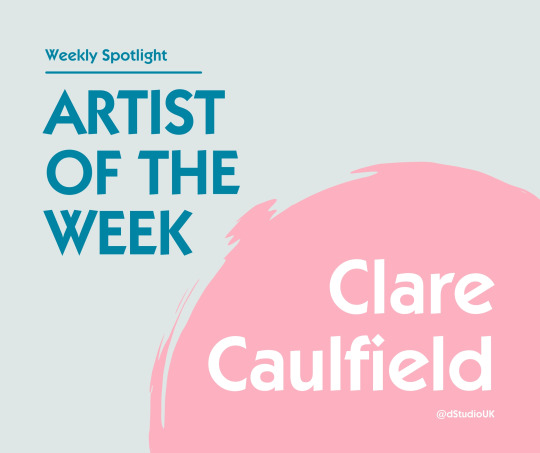
This week, ta daaaaa, we’re featuring the wonderful Clare Caulfield. Clare takes a lot of inspiration from her travels & different cultural designs. Her style of work is so unique to her, they really are a pleasure to look at and get lost in. WARNING: Clare’s artwork WILL make you want to go on holiday...... Just saying... 👀
We caught up with Clare for an interview, finding out about what she enjoys about her career in art, what inspires her & who she’d most like to invite to a dinner party...
What inspires you most when doing art?
I’ve always been fascinated by architecture as I love the detail and structure of buildings, the repetition and pattern to be found within their design. Using my sketchbooks and drawings produced on location, I try to work as spontaneously as possible back in my studio when I’m working on a painting in order to maintain energetic line work.
I love the buzz of cities and visiting new places, there’s always so much happening and so much to inspire me. The jumble of apartments, storefronts and skyscrapers in Manhattan or the elegant architecture of Venice and its canals, or simply capturing Parisian life outside a brightly canopied pavement café.
I always take lots of photographs and collect interesting ephemera on my travels. Menus, postcards and local newspapers, patterned paper bags, stamps, leaflets, vintage books and packaging, anything that will help to conjure a memory or spark my imagination. Sometimes I combine small elements of these collaged papers into my pieces.

Credit: Clare Caulfield
How did you get your art career started?
During my final year at university, I won a trip to Venice as a result of a drawing project and I decided to use it as the focus for my end of year degree show. The Venetian buildings were a huge inspiration. I really developed my drawing style during that time and it pushed me into a new way of working. I was staying just a couple of streets away from St. Mark’s Square, and had an amazing view of the piazza’s basilica domes. So Venice is a very special place for me as it's where my passion for drawing architecture began. It's such a beautiful city, there really is nowhere else like it.
Immediately after graduating I worked at a textile studio in London for a couple of years designing children’s fashion fabrics before deciding to move back up to Yorkshire to set up my studio to focus on producing my own work and developing my illustrative style. Since then I have exhibited in galleries throughout the UK and beyond producing work inspired by my travels to some of the world’s greatest cities. Closer to home my collection also includes the rugged beauty and charm of North Yorkshire’s coastal towns and villages of Whitby, Staithes and Robin Hood’s Bay.
What’s your favourite piece you have created so far?
The interior view of Grand Central Station in New York. It’s one of my favourite buildings in the world.

Credit: Clare Caulfield
What art tools could you not live without?
My sepia sketching pens. I definitely couldn’t survive without these so I have pots full of them in my studio so that I never run short. They really suit my drawing style, allowing me to make quick lively marks. Black linework would be too heavy for me to work in so brown ink is perfect. They are waterproof too so I can add washes of watercolour over the top. I mainly work on hot pressed Fabriano paper as its smooth surface enables me to achieve a fluid quality of line.
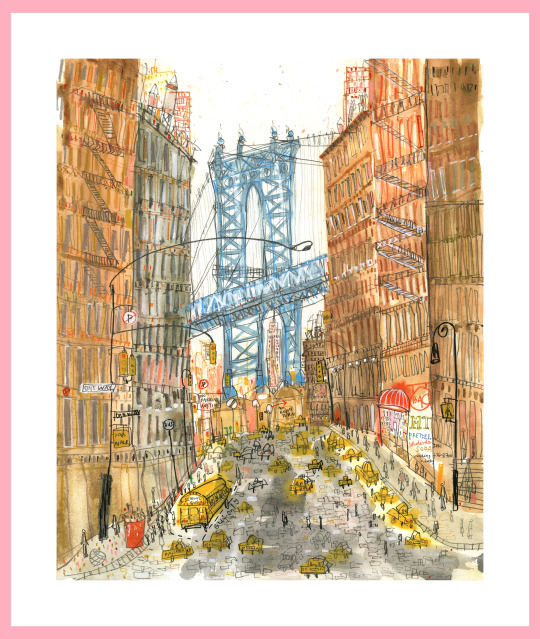
Credit: Clare Caulfield
What is your biggest challenge you face when working on your art?
Sometimes a painting may not be progressing quite as I want it to. This is all part of the creative process as it then motivates me to find new ways to approach it. Something as simple as working on a different type of paper or using a new drawing tool may be all it takes. I have to feel truly inspired to create work I’m really happy with.
If you could have a superhero power, what would you want to have?
Time travel would be great! I’d love to be able to look back and watch again how I created particular pieces of work. I sense an energy within my drawing when I’m fully lost in the moment of making a picture and that’s when I feel truly creative. I really don’t remember how some pieces evolve. They just happen. I try not to over think it or plan the process, so it’d be great to see how I did it!
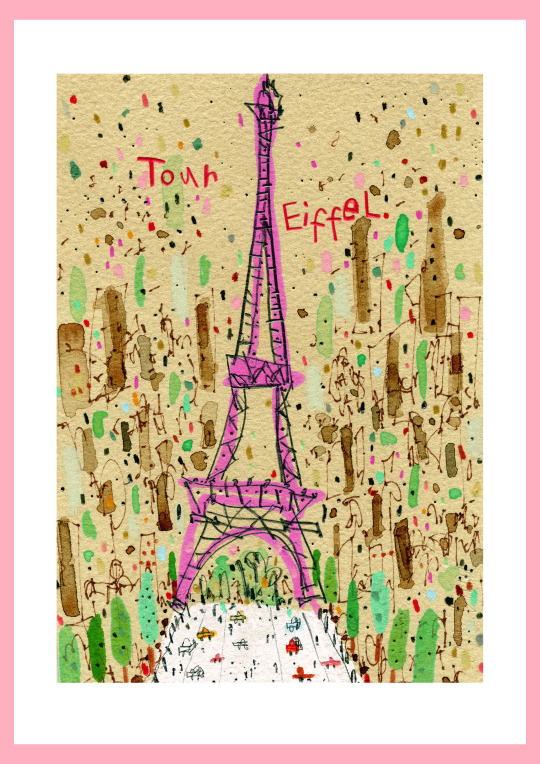
Credit: Clare Caulfield
Which famous faces would you invite to a dinner party?
David Hockney, Lucinda Rogers, Miroslav Šašek, Stephen Wilshire
What was your favourite class in school and why?
Art from as early as I can remember! I My love for all things creative has always been with me.
What was the first music album you remember buying?
Madonna True Blue

Credit: Clare Caulfield
If you could travel, or live anywhere, where would you go?
I’d love to visit Japan…one day!
This week’s artist interview was so so much fun. Thank you so much to Clare for taking the time to answer the questions and showcase her beautiful work. Clare is such a stand out artist within the studio, we’re so pleased to be featuring her this week ✌🏼Let us know your thoughts on this week’s artist and share some love for Clare’s work. Don’t forget you can check out more from Clare on her social media pages & her website! 😊
Clare Caulfield - Website
Clare Caulfield - Twitter
Clare Caulfield - Instagram
Clare Caulfield - Etsy
#ArtistofTheWeek#Artists#SupportingArtists#ArtistInterview#Interviews#QandA#SmallArtistsSupport#ArtStudio#Printing#dStudioUK#dStudio#ArtistLove#TravelArt#Travelling#Culture#CultureArt#Unique Art
2 notes
·
View notes
Text
exo journaling haul!
So a while ago I mentioned that I went BONKERS and got a ton of stickers and other stuff that I deemed absolutely necessary for my survival - and per @abunnycotton ‘s request I’m going to share what I got! It took a while for everything to come in (thank you USPS I appreciate you!) but here it all is! Under the cut for your convenience, enjoy :)
OK so the story is, I have a bunch of photocards, lomos, postcards, and other exo stuff that I’ve just kept stored away in a cupboard because I don’t know what to do it all. They came with my album purchases and while my albums are displayed on my bookshelf, I didn’t really have a good place to put the smaller things. I’ve been wanting to organize everything into something creative so I got the idea: why not make a journal? I get to come up with fun ways to store my extra stuff and it also gives me the opportunity to try journaling, which is something that I’ve wanted to do for a long time!
Side note: exo-ls who make and sell stuff are the SWEETEST people on the planet! Everyone included all sorts of freebies and personalized notes and I was so touched by their kindness <3
1) journaling supplies: I got all this from amazon! I got a mini A4 binder with plastic inserts and dotted paper. The inserts are for keeping the photocards and postcards (I’m going to use washi tape to hold everything in) and the dotted paper is for journaling. The binder gives me the option of customization so I can add stuff as I go. I also got journaling markers and a giant book of stickers because why not

2) exo lightstick stickers: from CookiessCreations on etsy

3) kyoongtube stickers: from babymilk114 on etsy. These were too cute to pass up!
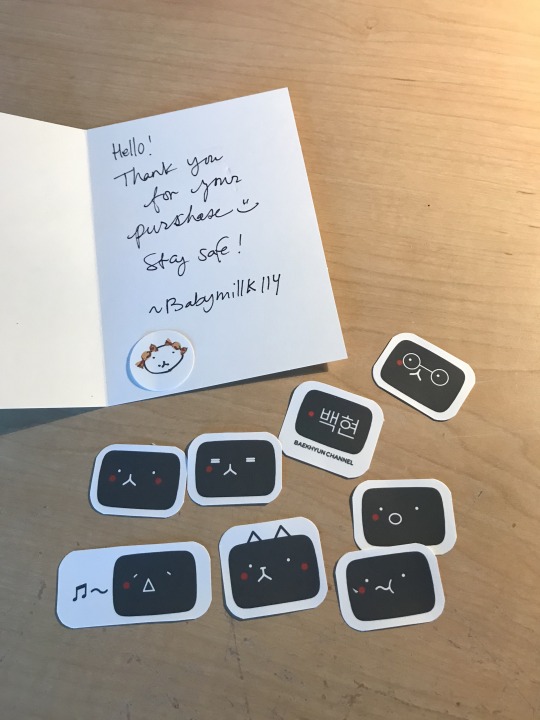
4) exo playlist stickers: from YehetMonkey on etsy. The seller’s note was really sweet :’)

5) exo journal pack: from RCuteStationary UK on etsy. Ok this is where shit got crazy!! Based on the pack size selected, you can get lomos, stickers, and washi tape. You can even customize the lomos and washi tape styles you want! Everything came really well packaged with a card.

BONUS: I also ended up buying the Kihno version of Obsession from Ebay because I found it at a really good price. After I made the purchase, the seller (luckyoneot9) reached out and asked me who my biases were for freebie purposes. I replied honestly with suho and chen, thinking that maybe I was going to get one extra photo or something. WRONG. I ended up getting lomos of both, a bunch of stickers AND these uber cute handmade photocards that had me squealing!! I was honestly so touched by all the effort and I really appreciate how she went the extra mile. Five star ratings across the board!

Yesterday, I got some more washi tape rolls from amazon (for finishing touches, or so I told myself) and that order should be coming in today, but other than that I can’t wait to get started with my journaling and organizing! I’m really satisfied with everything I got and I’m excited to add all these freebies to my existing exo collection!
ALSO: While I was waiting for everything to come in, I made my first “spread” inspired by Baekhyun’s cover of “Garden in the Air”. I was SO obsessed with that song and this was a cool way to channel my thoughts and creativity! This was a great opportunity for me to play around with different fonts and designs. My handwriting still needs a lot of improvement but I think it turned out pretty good for a first try :)

So yeah that’s everything I wanted to share! I’ll post journaling updates as I get more stuff organized. If anyone has journaling ideas I’d be happy to hear them! <3
12 notes
·
View notes